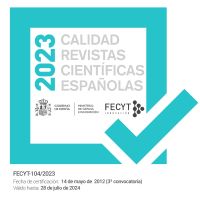Validation of the PLI Inventory as a Screening Measure of Procedural-non verbal Learning Difficulties
DOI:
https://doi.org/10.5944/reop.vol.36.num.1.2025.38876Keywords:
procedural learning disorder, non-verbal learning disorder, attention deficit hyperactivity disorder, learning difficultiesAbstract
The IDAP (PLI) Inventory is presented as a screening test for procedural learning difficulties. 190 participants aged 6-12 years with normal intelligence: 95 from the control group and 95 from the clinical groups: procedural-nonverbal learning disorder (n=53) and ADHD (n=42). Exploratory (KMO=0.71 and MSA=0.52-0.87) and confirmatory (CMIN/DF=2.4; TLI=0.985; CFI=0.961 and RMSEA=0.059) factor analyses were performed. We reduced to 24 items and obtained 6 factors that explain 70.6% of the total variance: motor skills, motor coordination, language, pragmatics, school learning and socioemotional. Validity and reliability are tested and descriptive statistics are provided. In all factors, except language, the TAP group (U-Mann Whitney) differs from the control group (p=.001) and the ADHD group (p=.005). The sensitivity and specificity of the test are demonstrated. Discriminant analyses indicate that it allows us to correctly classify 96.4% of our caseload. The scoring criteria are provided. This new assessment tool provides relevant information for guidance and educational psychology professionals in the detection of procedural learning difficulties and in the differential diagnosis, as well as for the subsequent design of a more precise and effective educational psychology intervention.
Downloads
Downloads
Published
How to Cite
Issue
Section
License
Copyright (c) 2024 Nerea Crespo-Eguílaz, Leyre Gambra, Jesus Jarque García

This work is licensed under a Creative Commons Attribution-NonCommercial 4.0 International License.
Las obras que se publican en la revista REOP están sujetas a los siguientes términos:
1. Los autores conservan los derechos patrimoniales (copyright) de las obras publicadas, y garantizan a la revista el derecho de ser la primera publicación del trabajo al igual que permiten la reutilización de las mismas bajo la licencia de uso indicada en el punto 2.
2. Las obras se publican en la edición electrónica de la revista bajo una licencia Creative Commons Reconocimiento-NoComercial 4.0 Internacional . Se pueden copiar, usar, difundir, transmitir y exponer públicamente, siempre que: I) se cite la autoría y la fuente original de su publicación (revista, editorial y URL de la obra); II) no se usen para fines comerciales; III) se mencione la existencia y especificaciones de esta licencia de uso.
3. Condiciones de auto-archivo. Se permite y se anima a los autores a difundir electrónicamente la publicación de sus obras, ya que favorece su circulación y difusión y con ello un posible aumento en su citación y alcance entre la comunidad académica.






